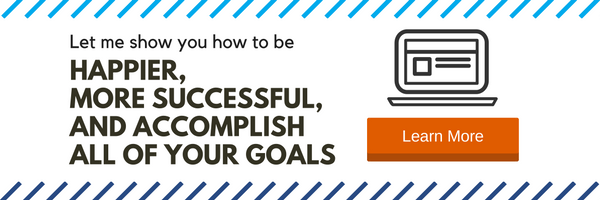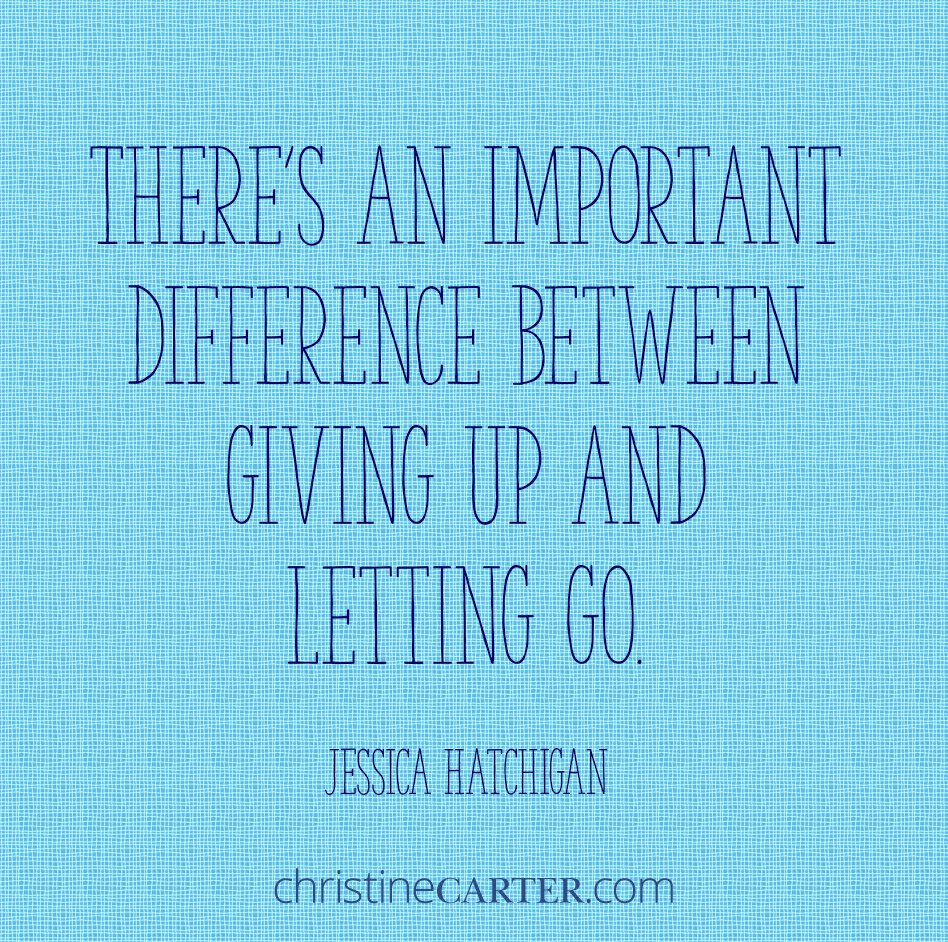 “There’s an important difference between giving up and letting go.” –Jessica Hatchigan
“There’s an important difference between giving up and letting go.” –Jessica Hatchigan
Author: Christine Carter

Why Working Longer Won’t Make You More Productive
I’m calling for a new conception of the “ideal worker.”
I don’t know anyone who has worked for a traditional business and hasn’t run up against our cultural notion of what journalist Brigid Schulte calls “the ideal worker”–the perfect employee who, without the distractions of children or family or, well, life, can work as many hours as the employer needs.
Ideal workers don’t have hobbies–or even interests–that interfere with work, and they have someone else (usually a wife) to stay home with sick children, schedule carpools, and find decent child care. Babies aren’t their responsibility, so parental leave when an infant is born isn’t an issue; someone else will do that. The ideal worker can jump on a plane and leave town anytime for business because someone else is doing the school pickups, making dinner, and putting the children to bed.
In terms of sheer number of hours on the job, most working parents can’t compete with these ideal workers. Still, it’s easy for us Americans to aspire to the archetype. But our fixation on the ideal worker can lead us to hone only one strength: the ability to work long hours.
Unfortunately, honing that one strength won’t get us very far. Why? The ideal worker is not necessarily ideal. Reams of research suggest that people who work long hours, to the detriment of their personal lives, are not more productive or successful than people who work shorter hours so they can have families and develop interests outside of work.
So why do we continue to believe that the longer and harder we work, the better we’ll be?
The ideal worker archetype was born more than 200 years ago during the Industrial Revolution. The rise of the factory system in the late 18th century marked the first time that a clock was used to synchronize labor. Once hours worked could be quantified financially, that created a new perception of time, one that saw the amount of time on the job as equivalent to a worker’s productivity.
This notion of work (and time) is particularly problematic today when we factor in all the fancy technology we have. You know, the stuff that lets us work ALL THE TIME. We can check our email before breakfast (and while we wait in line for our lattes), and make calls during our commute. Most of us can keep working straight through lunch while we eat–how wonderfully productive is that? And after dinner, we can log back in and KEEP WORKING when our grandparents back in the day might have been, say, conversing with a neighbor or spouse or child. Or perhaps reading a book. For pleasure.
Overwork does not make us more productive or successful. #TheScienceOfFindingFlow Share on XOverwork does not make us more productive or successful.” username=”raisinghappines”]
The truth is super hard for us to hear: Overwork does not make us more productive or successful. For most of the 20th century, the broad consensus (among the management gurus) was that “working more than 40 hours a week was stupid, wasteful, dangerous, and expensive–and the most telling sign of dangerously incompetent management to boot,” writes Sara Robinson, a consultant at Cognitive Policy Works who specializes in trend analysis, futures research, and social change theories.
Moreover, according to Robinson, more than a HUNDRED YEARS of research shows that “every hour you work over 40 hours a week [will make] you less effective and productive over both the short and the long haul.” Really! Even for knowledge workers!
Why? The human brain did not evolve to operate like a computer that gets switched on and can run indefinitely without a break. Just as a fruit tree does not bear fruit 365 days a year, human beings are only productive in cycles of work and rest.
So if we are to be our most productive, successful, and joyful selves, we must create a new cultural archetype for the ideal worker. One that is based on the biology we actually have, and the way that we actually are able to work. That is exactly what I aim to do in a series of upcoming posts.
True happiness and fulfillment are not found in the unyielding pursuit of an impossible ideal. Share on XTrue happiness and fulfillment are not found in the unyielding pursuit of an impossible ideal.” username=”raisinghappines”]
This idea will be threatening to the people around you who still strive to be ideal workers. But sticking with the status quo–a life of unrelenting work–will break your heart slowly, as one of my clients so aptly put it. True happiness and fulfillment, it turns out, are not found in the unyielding pursuit of an impossible ideal.
To develop our multiple talents, we must stray from the herd of our cultural archetypes. This can be terrifying and disorienting–after all, humans are deeply social animals, so our nervous system sends distress signals when we break from our group. But we will not find our groove by conforming to unrealistic ideals or outdated stereotypes. We’ll find it by allowing ourselves to be complex and divergent–our most authentic, balanced selves.
Friday Inspiration: The Shirt Off His Back
Thursday Thought
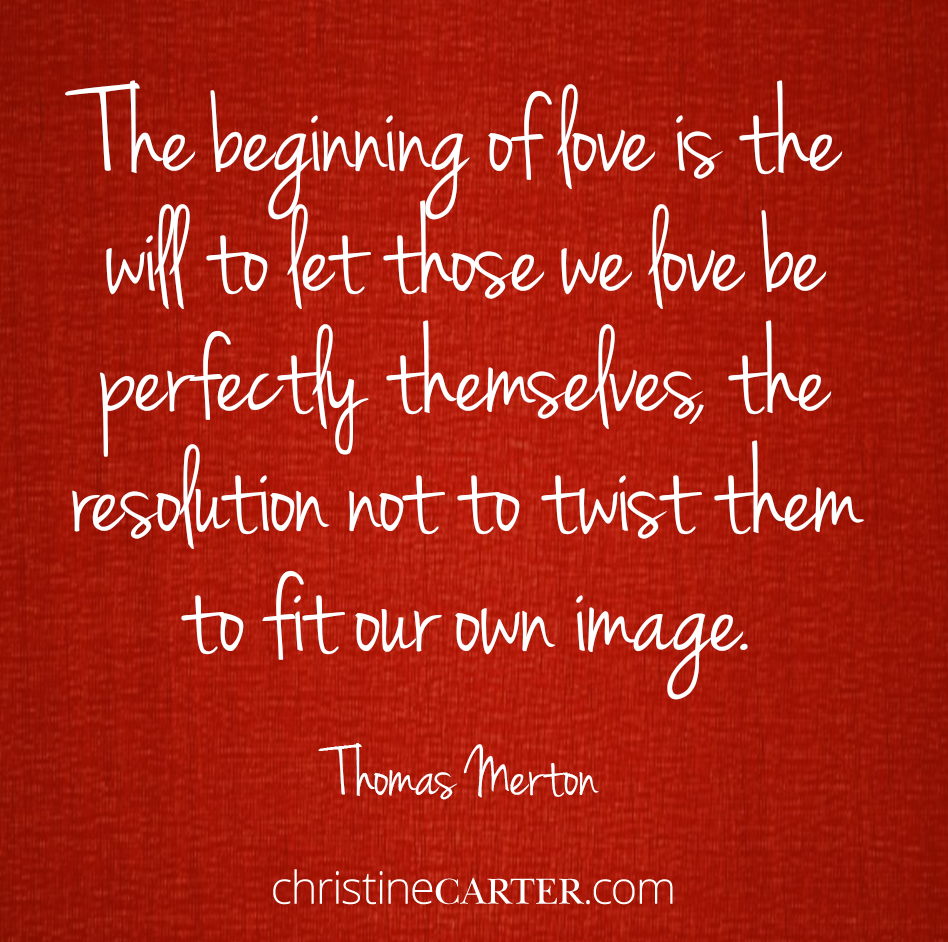 “The beginning of love is the will to let those we love be perfectly themselves, the resolution not to twist them to fit our own image.” — Thomas Merton
“The beginning of love is the will to let those we love be perfectly themselves, the resolution not to twist them to fit our own image.” — Thomas Merton
Tuesday Tip: Schedule Positive Experiences
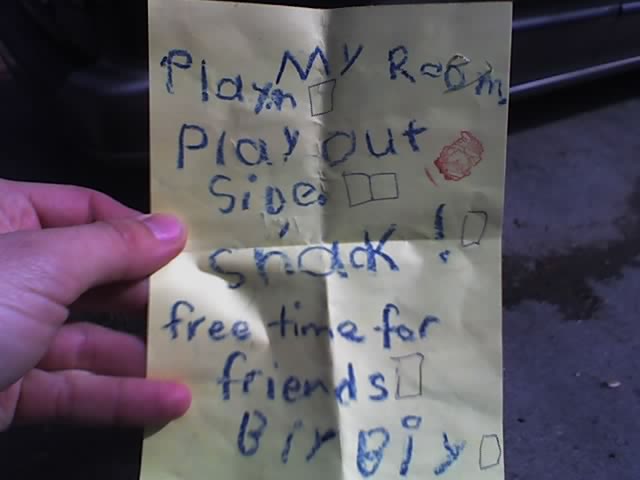
All of our emotions, both positive and negative, have an often profound physiological effect on our bodies and our brains. We are most familiar with what happens in our bodies when we are stressed out: that all-too-familiar fight-or-flight response. Something makes us feel threatened — or physically stressed, as when we deprive ourselves of sleep or catch a cold — and our body releases stress hormones, like cortisol and adrenaline.
But positive emotions like gratitude, compassion, awe, love, and other positive emotions also affect our bodies and brains, decreasing our heart rate, among other healthy things. This is why Barbara Fredrickson, a positive psychology pioneer, has famously shown that positive emotions put the brakes on the part of our nervous system that creates the deleterious stress response—what she calls the “undoing effect” of positive emotions.
Positive emotions come in a lot of different flavors. When we pursue happiness, we are usually pursuing pleasure and gratification rather than an actual positive emotion. Think about contentment, bliss, engagement, mirth, frivolity, silliness—these are all positive emotions based in the present. We can also cultivate positive emotions about the past (like gratitude) and the future (like faith, hope, confidence, and optimism). A flourishing life is also fed by positive emotions that are global in nature, like awe and elevation and inspiration. Positive emotions that connect us to other people, like love and compassion, are our most powerful positive emotions, and they are the most important ones for creating a better world and a fulfilling life.
Here’s an easy way to add more positive emotions into your life:
- Reflect on what has made you happy before. When was the last time you felt a strong positive emotion? Perhaps you felt really grateful, joyful, or excited.
- Identify the circumstances and the behaviors that sparked the emotion. Perhaps you felt hopeful listening to a TED talk, or love when a child spontaneously threw his arms around you.
- Figure out how to make that situation happen again, and — here’s the trick — schedule it. I know that this might sound a little hoaky… scheduling happiness sounds a little like scheduling sex (which is not-so-sexy). But while research shows that trying to be happier tends to backfire, consistently scheduling activities that have made you happy in the past will likely make you feel happier in the future. (How’s that for the science of the blazingly obvious?)
So whip out your calendar, please, and start planning your time around activities that bring you joy. Or inspiration. Or compassion — whatever flavor of positive emotion is lowest hanging fruit for you. Researchers call this activity “prioritizing positivity,” and it’s best done as a way to spend at least a little time each day on the things things you most enjoy.
This post draws from from my latest eCourse: The Science of Finding Your Flow: How to Create Happiness and Maximize Productivity (launching later this Spring) . If you’re invested in bringing more ease and flow into your life this year, you will love this eCourse! And if you pre-order this eCourse now, you’ll get a FREE hardcover copy of my book The Sweet Spot and $50 off! This is a steal, friends. Plus, if you want to, you’ll get to help me test out the content before the launch. Click here to pre-order The Science of Finding Flow eCourse.
Photo courtesy of Liz Henry.
The Power of Positivity
Such a simple idea: Step 1: Spend 10 minutes every day complimenting the people around you. Step 2: See what happens. Step 3: Report back here.
Thursday Thought
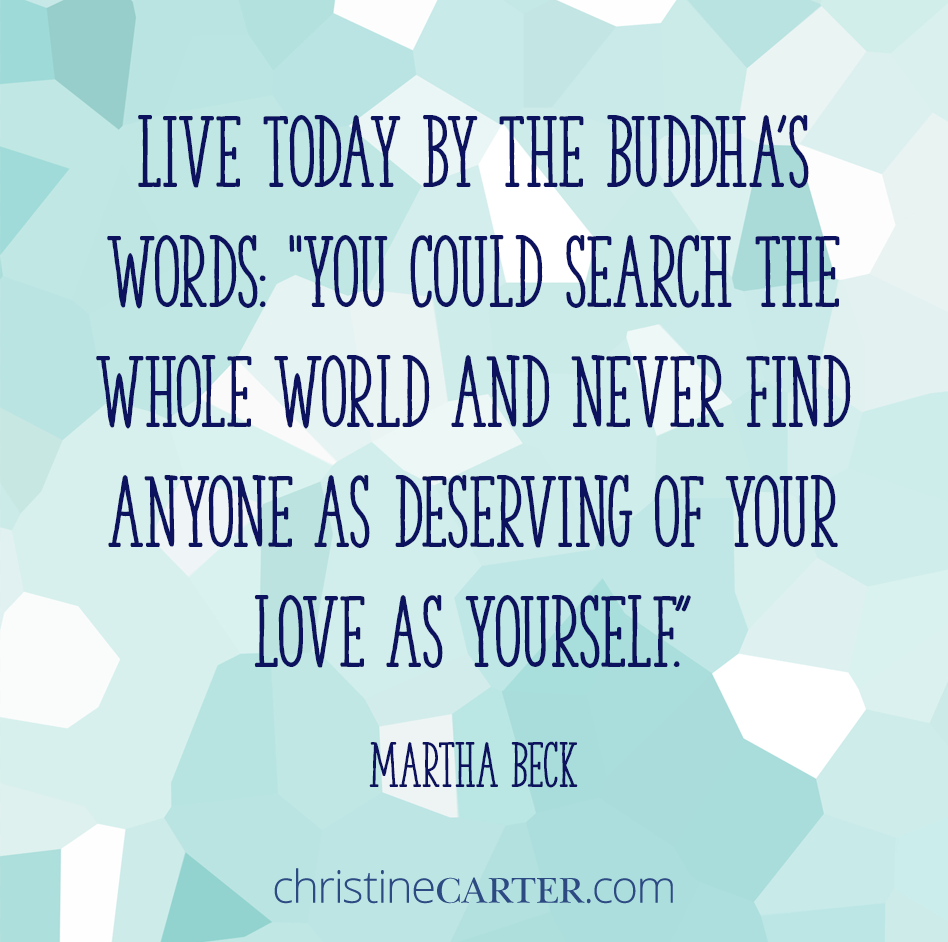 Live today by the Buddha’s words: “You could search the whole world and never find anyone as deserving of your love as yourself.” –Martha Beck
Live today by the Buddha’s words: “You could search the whole world and never find anyone as deserving of your love as yourself.” –Martha Beck
Join me at this Free Event in Bend, Oregon!
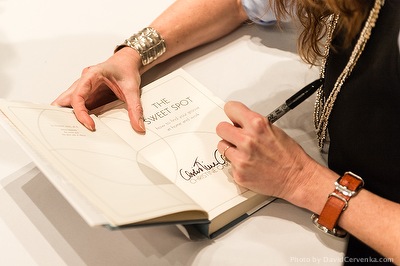
I am so excited to share this FREE workshop with you. I’ll be in Bend, OR in a few weeks to talk through how to expand the amount of time you have to get things done – while fully enjoying the life you’ve worked so hard to create. I hope you’ll join me:
How to Achieve More by Doing Less Workshop
Monday, February 22, 2016 at 7:00 pm
Bend Tech Building, Bend, OR
Details: Learn more and register here
Register soon as space is limited!

3 Surprising Ways to Feel More Loved
Are you focused on romantic love this Valentine’s Day? If so, you’re missing an opportunity! Building stronger connections with those around us can lead to a happier, healthier, more successful, and easier life. Our relationships help us live and work from our sweet spots by bringing us both strength and ease.
Love and the similar emotions that we experience when we feel connected socially—like affection, warmth, care, fondness, and compassion—are a powerful force for a rich and rewarding life. In Love 2.0 author Barbara Fredrickson’s words:
Love is our supreme emotion: its presence or absence in our lives influences everything we feel, think, do, and become. It’s that recurrent state that ties you in—your body and brain alike—to the social fabric, to the bodies and brains of those in your midst. When you experience love . . . you not only become better able to see the larger tapestry of life and better able to breathe life into the connections that matter to you, but you set yourself on a pathway that leads to more health, happiness, and wisdom.
Similarly, the longest running study of human development, The Harvard Grant Study, makes it clear that “the most important influence, by far, on a flourishing life is love,” as one of the researchers behind the study, George Vaillant, put it in Triumphs of Experience.
So if our happiness and our success are best predicted by the quantity and quality of our relationships with others, the question remains: How can we increase the amount of love we get in our lives? Here are a few of my favorite ways to feel more connected:
- Talk to strangers — or at least smile at the barista.
A half dozen recent studies demonstrate the power that a simple positive interaction with a stranger has to make us happier. In one study, researchers randomly assigned volunteers to talk to the stranger who sat down next to them on the train during their morning commute. Pretty much no one thought that they were going to enjoy giving up their morning solitude to make small talk with someone they didn’t know and would probably never see again. But guess what? The volunteers enjoyed their commute more than the people in the study who got to read their books and finish their crossword puzzles in silence. What’s more, not a single study participant was snubbed. Other research indicates that the strangers being chatted up in public spaces similarly think they won’t want to talk, but then end up enjoying themselves.
The takeaway is that often the easiest way for us to connect with others is to slow down just enough to make eye contact with someone, smile, and, if we’re feeling brave, start a little conversation. Research shows that even just acknowledging someone else’s presence by making eye contact and smiling at them helps people feel more connected.
- Just send loving thoughts to others.
When Barbara Fredrickson and her colleagues want to study what happens when people increase their daily diet of love, they simply ask people to do a loving-kindness meditation once a day. This is a private, quick, no-contact-with-others way to give. Also called metta, loving-kindness meditation is the simple practice of directing well wishes toward others. Loving- kindness meditation isn’t complicated — it really isn’t anything more than using your imagination to send love and well wishes to others.
This stuff is more effective than Prozac for many people.If you are going to do only one thing today to bring more love and connection into your life, I recommend you do this.
Even if you aren’t likely to sit in meditation everyday sending good thoughts to yourself and others, you can use metta throughout the day as a tactic to increase your feelings of well-being, compassion, and connection. Perhaps put a sticky note on your bathroom mirror or refrigerator door or car dashboard — wherever you tend to be most exhausted or overwhelmed or isolated — to remind you to pause and cultivate a loving thought or two.
- Master the most important relationship skill in the history of the universe.
Perhaps the most useful skill we can master for building strong connections with others is the ability to deliver an effective apology. When a relationship starts to break down, the best repair, bar none, is almost always an apology.
Think about it: if a relationship is dented or sputtering, someone probably made a mistake. Perhaps it was a benign comment (a well-meaning but poorly understood suggestion) or maybe it was more toxic (you got caught in a lie, or didn’t follow-through on a commitment).
People make mistakes in relationships all. the. time. Not just bad people, or weak people. All people. Our mistakes are what make us human. And even when we don’t think that we’ve made a mistake, other people will often find errors in our ways. We human beings are walking offenders.
So if we’ve done something that offends someone else — whether or not we feel we are to blame — we apologize?
YES.
I believe that it almost always serves our highest good to apologize if we’ve hurt or offended someone else — even if we think the offended person’s anger is unjustified, or if we have a perfectly good excuse for what happened. Or if our intentions were all good.
But all apologies aren’t created equal, of course. (All parents have watched children spit out a forced “SORRY!” and known it was worthless.) So what makes a good apology? After studying that question extensively, Aaron Lazare developed perhaps the most robust criteria to date for effective apologies. Drawing on Dr. Lazare’s work, I’ve created this three-step method for making a good apology.
This post is a little tidbit from my latest eCourse: The Science of Finding Your Flow: How to Create Happiness and Maximize Productivity (launching later this Spring) . If you’re invested in bringing more ease and flow into your life this year, you will love this eCourse! And if you pre-order this eCourse now, you’ll get a FREE hardcover copy of my book The Sweet Spot and $50 off! This is a steal, friends. Plus, if you want to, you’ll get to help me test out the content before the launch. Click here to pre-order The Science of Finding Flow eCourse.
Image by Benjamin Lehman
Friday Inspiration: Mirror
We can be imperfect and it won’t scar our children. Really! (But they reserve the right to hold it against us at a later date!)

